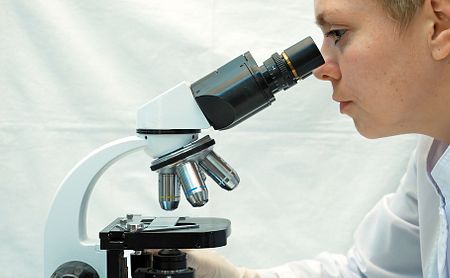Double-Seropositive MG May Be Subtype of MuSK-MG, Study Suggests

A lesser known variety of myasthenia gravis (MG), called double-seropositive, appears to be a subtype of MuSK-antibody positive MG, a single-site study in China reports.
Recognizing this subtype could help in properly diagnosing patients, allowing for better treatment outcomes, its scientists said.
Their study, “AChRAb and MuSKAb double-seropositive myasthenia gravis: a distinct subtype?,” was published in the journal Neurological Sciences.
MG is characterized by the overproduction of autoantibodies that target proteins at the neuromuscular junction, impairing communication between muscles and nerves. More commonly, these proteins are acetylcholine receptors (AChRs) and muscle-specific tyrosine kinase (MuSK).
Although some studies have found a small population of patients with both anti-AChR and anti-MuSK antibodies — so-called double-seropositive (DSP) patients — whether this is a distinct clinical group has not been clear.
Making this distinction matters, as experts suggest that classifying MG patients by antibody subtype can help to guide treatment decisions and establish more accurate prognoses.
Researchers at Sun Yat-Sen University in Guangzhou, China, analyzed records of adults diagnosed with MG, who tested positive for anti-AChR, anti-MuSK, or both antibodies, and had at least two years of follow-up records.
From among 17 patients with DSP-MG, eight with MuSK-MG, and 27 with AChR-MG, they found several similarities and no significant differences between DSP-MG and MuSK-MG.
Symptoms in people with DSP-MG tended to be typical of MuSK-MG, such as bulbar palsy, which can include difficulty swallowing and progressive loss of speech, and more frequent myasthenic crises (worsening muscle weakness, resulting in respiratory failure).
DSP-MG cases generally appeared more severe than those of AChR-MG, as measured by the Myasthenia Gravis Foundation of America (MGFA)’s five-part classification system.
Those with AChR-MG were mainly classified as MGFA I, meaning that muscle weakness was restricted to the muscles surrounding the eyes. In contrast, DSP-MG patients were mostly classified as MGFA II, indicating mild weakness affecting other muscles, but others placed into the more severe MGFA classes III through V. Such placement makes them more comparable to MuSK-MG patients.
Treatment response underscored another parallel between DSP-MG and MuSK-MG. Whereas AChR-MG patients are more sensitive to cholinesterase inhibitors, those diagnosed with MuSK-MG tend to require additional lines of therapy, including immunosuppressants, and to show resistance to some treatments.
Similar to MuSK-MG, people with DSP-MG in this study needed more immunosuppressants, and their treatment was less likely to result in remission.
DSP-MG patients were also more likely than those with AChR-MG to have autoantibody abnormalities, and to be female (as were the patients with MuSK-MG).
A literature review of past cases further supported these distinctions, the study noted.
“Although our study was limited by a small sample size,” the researchers wrote in conclusion, “the results of our analyses and the literature search suggest that DSP-MG is a subtype of MuSK-MG. These findings can facilitate the diagnosis and treatment of DSP-MG in order to achieve better clinical outcomes.”






